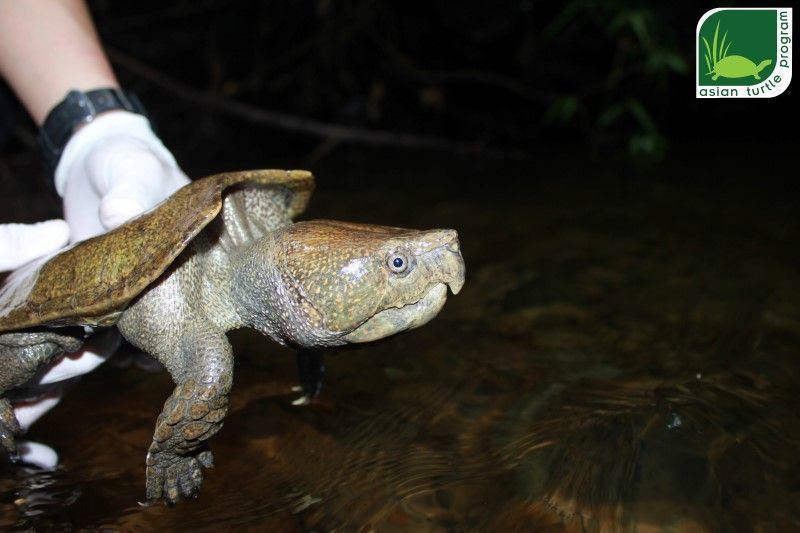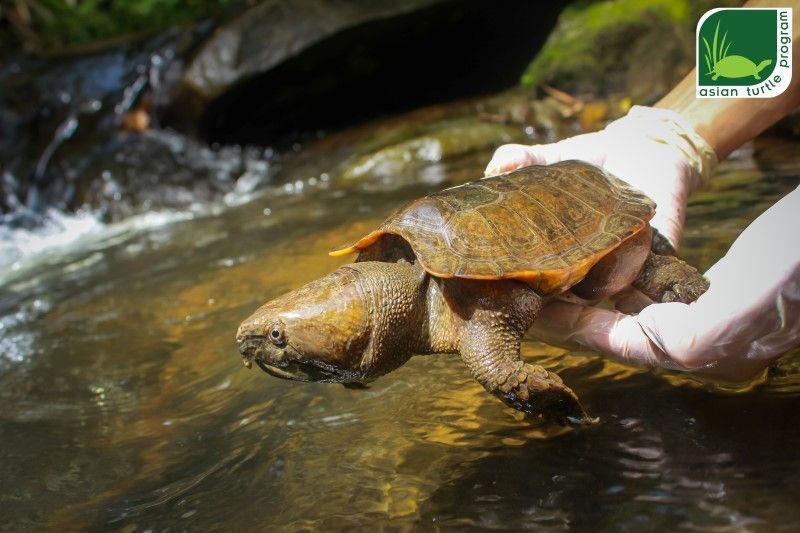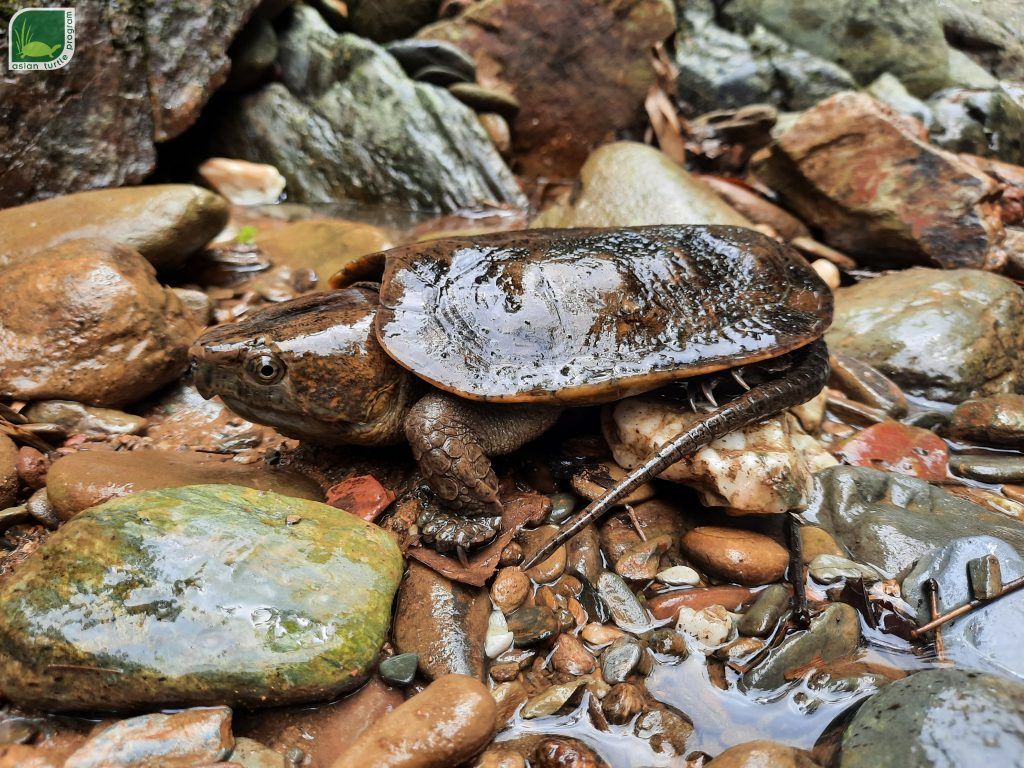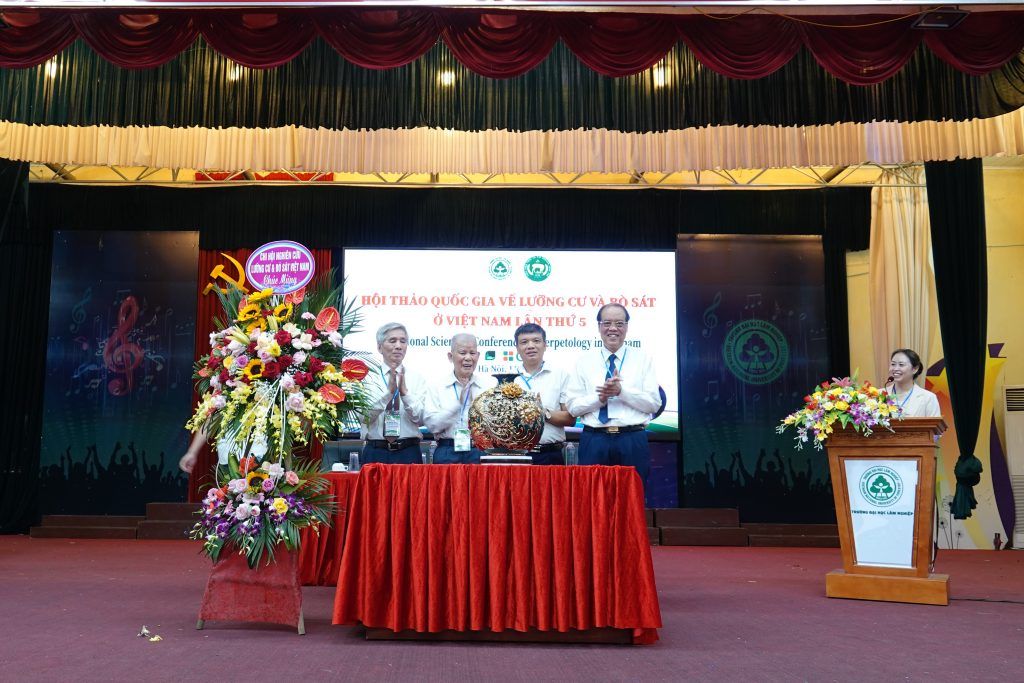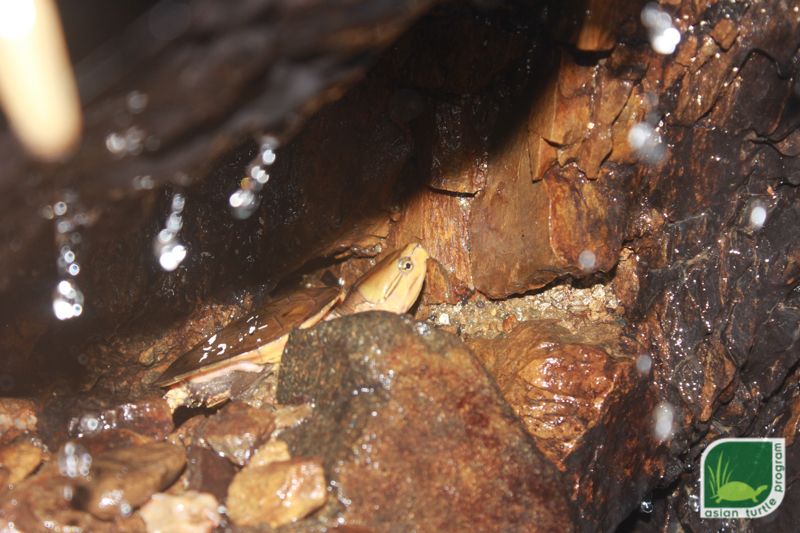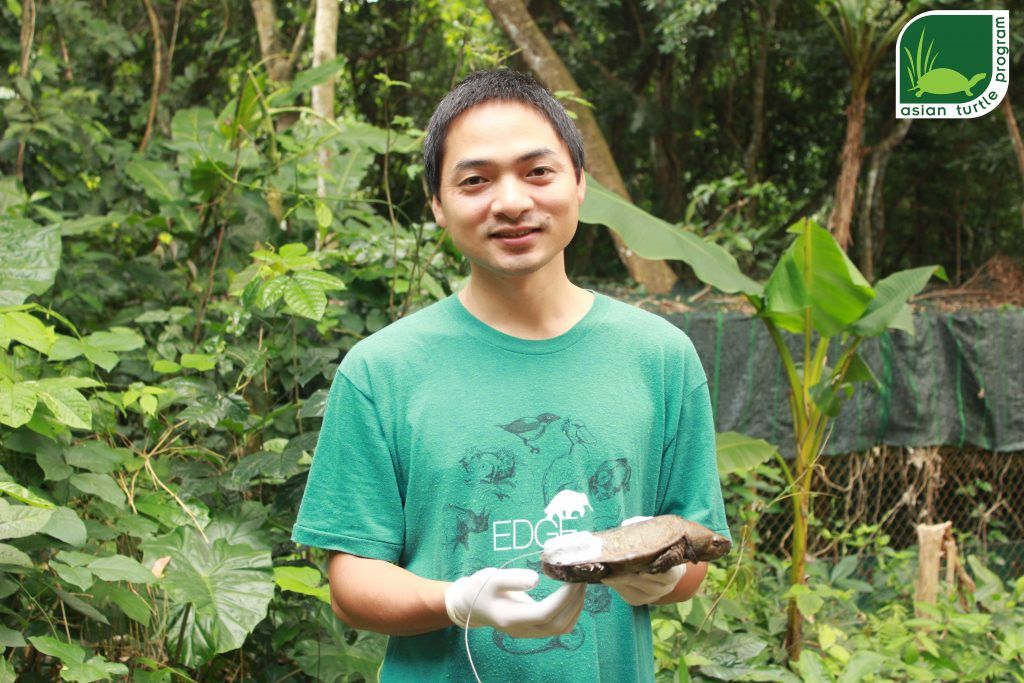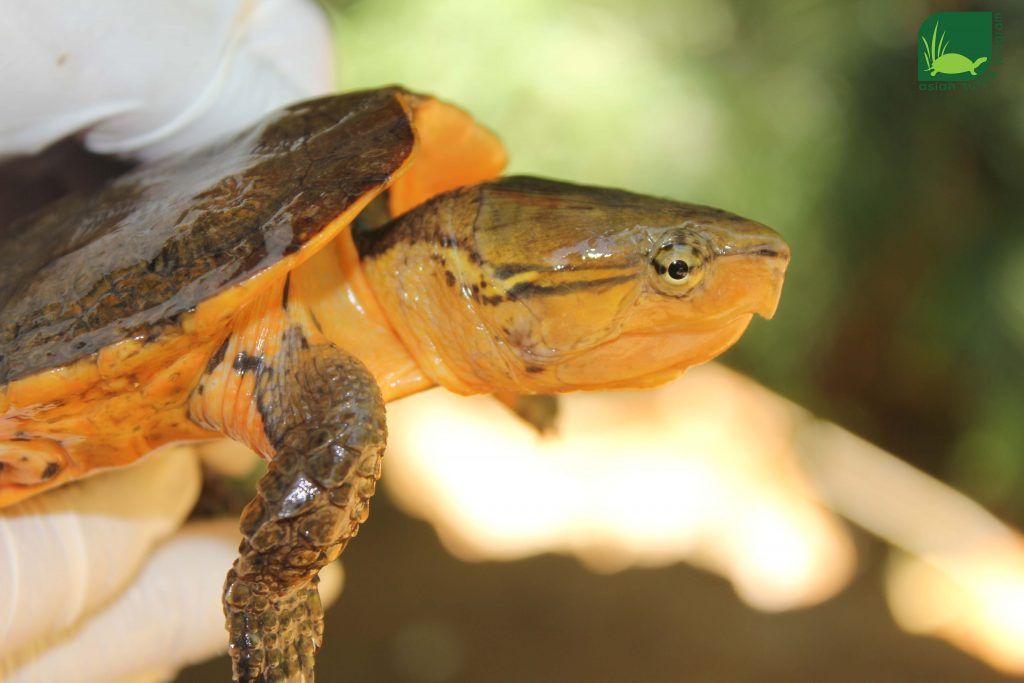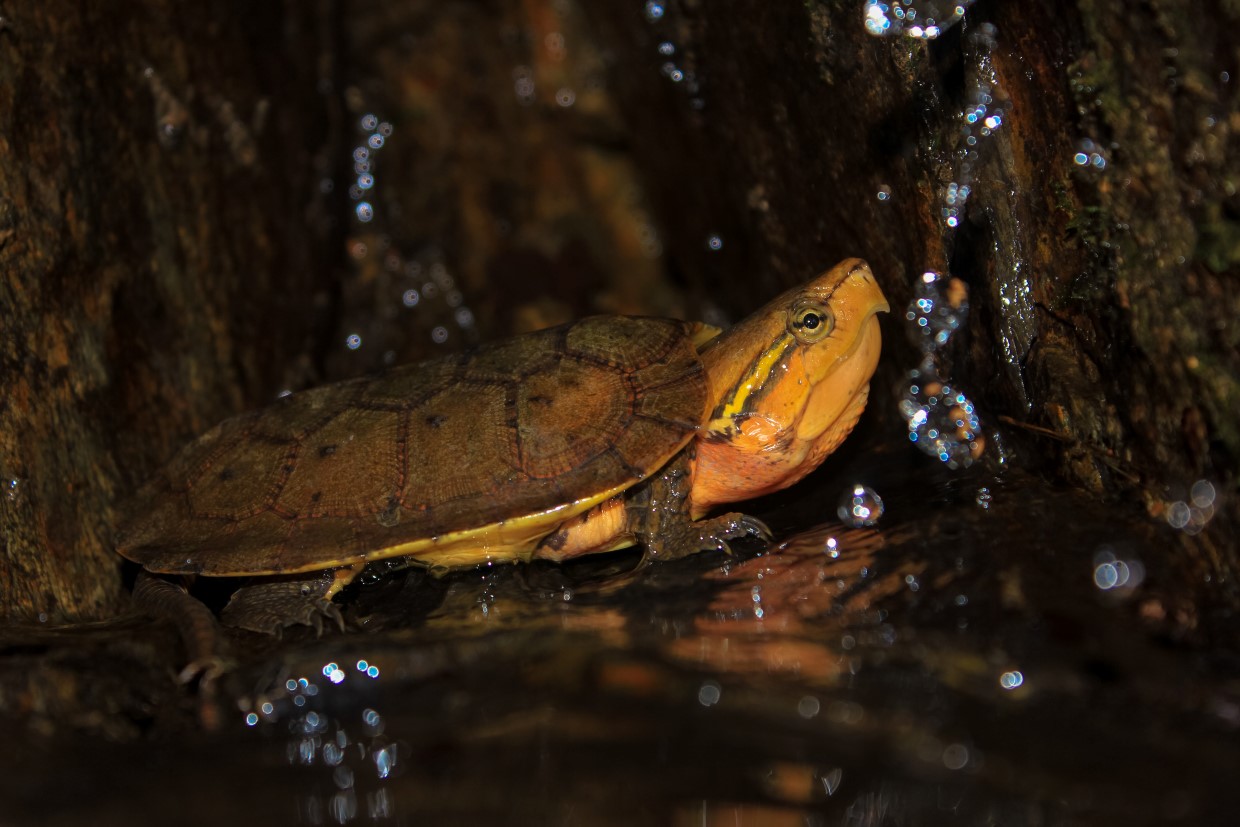
The Big-headed Turtle (Platysternon megacephalum) Project
Overview
The endangered Big-headed Turtle (Platysternon megacephalum) is a unique species, sitting alone in its own Family, Platysternidae, and has three confirmed subspecies: P. m. megacephalum, P. m. peguense, and P. m. shiui. It is named after its relatively large head, compared to its body size, which prevents it from retracting its head into its shell. It makes up for this reduced defence by having an armoured head with a sharp beak. Other characteristic features of this species include: a flat, smooth carapace, long thick tail and long sharp claws to help with manoeuvre in the streams and rocky areas in which it is found.
The Big-headed Turtle is seen in high frequency in the illegal wildlife trade and the situation is worsening year on year. The Asian Turtle Program (ATP) of Indo-Myanmar Conservation (IMC) and the Turtle Conservation Centre (TCC) have been rescuing this species in large quantities from confiscations in recent years and due to the territorial nature of this species, it needs to be kept separate from other individuals and thus, it is difficult to keep.
ATP/IMC has partnered with the Zoological Society of London (ZSL), Paignton Zoo, Nordens Ark, and the Centre for Natural Resources and Environmental Studies (CRES) as part of their Big-headed Turtle project, which is mainly funded by the Fondation Segré Conservation Fund. The project is also supported by ZSL’s EDGE of Existence programme. The main objective of the Big-headed Turtle (Platysternon megacephalum) project is: assessment of release strategies for confiscated and Endangered Big-headed turtles in Vietnam.
The collaborative work aims to:
- Improve knowledge, skills and local conservation capacity in Vietnam
- Assess the prevalence of Mycoplasma and Herpesviruses infections in wild, locally caught big-headed turtles and other highly threatened turtle species
- Improve understanding of local ecological knowledge of big-headed turtles at release site
- Increase knowledge of survival rate & spatial ecology of big-headed turtle through a radio telemetry monitoring study of a subset of translocated turtles
- Raise awareness of the species amongst local rangers and the local community
- Develop a big-headed turtle species conservation action plan in Vietnam
Activities to date
In March 2019, the team went on a scoping mission to look for potential release sites for Platysternon in protected areas in northern Vietnam. A total of three sites were visited, with several habitats being identified as suitable for release in 2019 for a large number of rehabilitated Big-headed Turtles from the Turtle Conservation Centre (TCC) in Cuc Phuong National Park.
In June 2019, key informant interview surveys were carried out in the buffer zones of two protected areas in northern Vietnam where staff collected information on distribution, hunting and trade of Platysternon in the areas. During this intensive survey, over 30 professional turtle hunters and traders were interviewed; information regarding local hunting methods, hunting seasons, animal trade volumes and local people’s awareness and attitude towards Big-headed Turtles was recorded.
In August 2019, staff completed an eight-day-long field survey in a protected area in northern Vietnam to both confirm the existence of Platysternon in the wild at this location and collect samples to use to screen for pathogens. This activity is one of the vital steps in the release strategy for confiscated Big-headed Turtles. The team set a large number of non-lethal traps and capture seven turtles in total including four Platysternon. As well as gathering photographs and morphological data from all of the turtles, swab samples were collected from the Big-headed Turtles for subsequent pathogenic health screening. These are the first ever wild swab samples from Vietnamese turtles.
In May 2020, two separate reintroductions of Big-headed Turtles were completed in protected areas in northern Vietnam. In total, 35 Big-headed Turtles were released, all of which had been rescued from the illegal wildlife trade and had been rehabilitated at either the TCC or Pu Mat Rescue Centre in Pu Mat National Park. Staff collected blood, faecal and saliva samples to be tested for disease-causing pathogens and parasites, and to investigate the genetics of the Big-headed Turtles. Finally, the Big-headed Turtles were fitted with radio transmitters so that we can monitor their movement and behaviour following release.
In the same month, another interview survey was conducted in three communes in national park buffer zones; a total of 100 local people, including local rangers, officers, farmers, and professional Big-headed Turtle hunters, were questioned during this interview.
Another release of turtles in northern Vietnam, including 40 Big-headed Turtles, was undertaken in June 2020, boosting wild populations in a protected area.
In September 2020, the fourth release was conducted, seeing another 25 Big-headed Turtles back to the wild.


